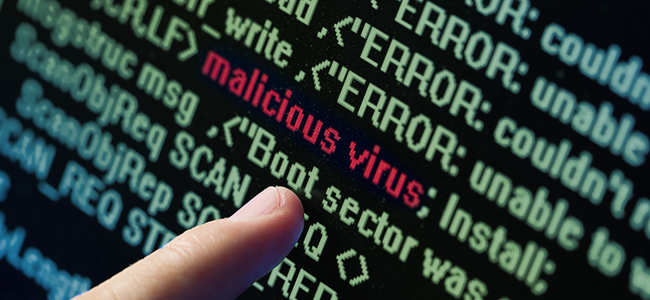
Computer Virus
Even before we try to understand what a boot sector virus is, let us understand what is a computer virus. In the online world, the term computer virus refers to a malicious program that auto-multiplies by copying itself to another program. Simply put, a computer virus spreads itself into other executable code or documents. Normally, a computer virus is created with the sole purpose of infecting vulnerable systems, for gaining admin control and to steal user private information. Basically, the intent is to prey on online users by deceiving them.
How Computer Virus Spread?
Today, emails act as one of the ideal methods by which viruses spread. The unwary user who opens an attachment invites the trouble. Besides this, visiting an infected website, clicking on an executable file, or viewing an infected advertisement can cause the virus to spread to your system. The infections also spread while connecting with already infected removable storage devices, such as USB drives.
Boot Sector Virus
The boot sector virus is a computer virus that infects a storage device’s master boot record (MBR) of hard disks. During start-up, the infected code runs when the system is booted and gets loaded to the computer’s memory, however, once loaded it will infect other floppy disks when accessed in the infected computer. On the other hand, it is not compulsory that a boot sector virus favorably boot the victim’s PC to infect it. By which, even non-bootable media can trigger the spread of boot sector viruses.
The boot sector viruses have become obsolete ever since the dissolution of floppy disks. Besides, today’s operating systems incorporate boot-sector protection which makes it difficult for boot sector viruses to infect them.
However, of late, we see advanced ones come with dodging capabilities that help in bypassing antivirus software and other advanced levels of defenses.
The polymorphic malware development in present times allows the viruses to dynamically modify its code as it multiplies. This has made the virus identification a bit challenging.
The Symptoms of Boot Sector Viruses
As the name suggests, the boot sector virus is designed to cause a variety of boot or data retrieval problems. In a few rare cases, data disappear from entire partitions. In other cases, the computer abruptly becomes wobbly. Usually, the infected machine misses to start up or to connect with the hard drive. Additionally, failure broadcasts such as “Invalid system disk” may become common.
How to prevent boot sector virus attacks?
Follow the suggested guidelines to steer clear from the boot sector virus attacks. Do not open an email attachment unless you were expecting it and know whom it’s from. Do not open any unsolicited executable files, documents, spreadsheets, etc. Never open files with a double file extension, e.g. filename.txt.vbs. This is a typical sign of a virus program. Always have an antivirus program installed on your computer. See to that your virus protection program is up-to-date.
Comodo Antivirus
The genuine way to remove boot sector virus and to stay protected from future attacks is by downloading Comodo Antivirus software. It features a proactive mechanism that defends against any kind of virus attacks. The Comodo Antivirus software provides automatic scanning of files when downloaded from the internet. On the whole, the Comodo virus protection program guards against all malicious software including zero-day malware.
Related Resources:
Coronavirus Phishing Attacks


 (23 votes, 4.83 / 5
(23 votes, 4.83 / 5

